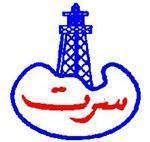Type State-owned Key people A. Soghair (Chairman) Website Official website Founded 1981 | Industry Petroleum Products UpstreamDownstream Number of employees 6,652 (2006) | |
 | ||
Profiles | ||
Sirte Oil Company (SOC) (Arabic: شركة سرت للنفط) is an oil and gas company in Libya operating under the state-owned National Oil Corporation (NOC). The company is located in Brega SOC’s operations include oil and gas exploration and production (E&P) and manufacturing.
Contents
Background
The company was initially known as Esso Standard Libya Inc., the first company to discover commercial quantities of crude oil in the Zelten oil field. In 1981, Exxon (parent company of Esso Standard) withdrew their Libyan operations, after which Sirte Oil Company was formed as a NOC subsidiary. In 1986, SOC took over the assets of Grace Petroleum, one of the five US companies forced by the U.S. government to leave Libya. In 1991, SOC merged with the National Petrochemical Company, creating the Sirte Oil Company for Production, Manufacturing of Oil and Gas. Activities included oil refining, liquefaction of natural gas and petrochemicals (methanol, ammonia and urea).
SOC operates the Raguba field in the central part of the Sirte Basin. The field is connected by pipeline to the main line between the Nasser field, one of the largest in Libya, and Brega. Besides Nasser, SOC is in charge of two other gas fields - Attahadi and Assumud - plus the Marsa el-Brega liquefied natural gas (LNG) plant. The LNG plant at Brega processed about 900 million cubic meters per year, or about 700,000 metric tons per year, of natural gas. In 2000, SOC reportedly made a 13-billion-cubic-meter-per-year natural gas discovery in the Sirte Basin (Africa Energy Intelligence, 2000a, b).
Production Overview
SOC Petrochemical Complex
SOC's petrochemical complex is located near Brega. It consists of six plants: The combined production capacity for the three products is 6,950 mtpd. All products are marketed by the Brega Marketing Company.
SOC Brega Port, Marine and Utility Facilities
Brega port exports SOC's oil, gas and petrochemical products. The port comprises a single and double berthing docks with various depths, cargo docks, jetting and mooring for SOC products. The Utilities and Shipping Department is responsible for port operation and other related facilities. These include two power generating stations producing a total capacity of 115 MW. Additionally, there are two desalination plants with a capacity of 4.5 million US gallons (17,000 m3) per day.
Fields
SOC has the following fields:
